St Paul's Anglican Church
Templeton Street, Clunes
Built c.1860 Hamlin & Son, London for unknown private client
Installed 1881 Methodist Church, Daylesford
Installed present location 1888
Restored 2018 Australian Pipe Organs Pty Ltd
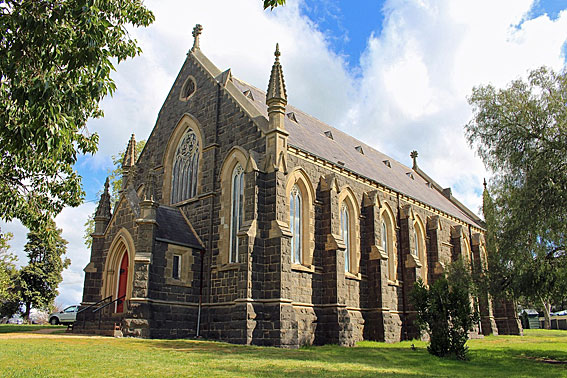
St Paul's Anglican Church, Clunes - exterior of church
Photo: Trevor Bunning (September 2017)
Historical and Technical Documentation by John Maidment
© OHTA, 2008 (last updated January 2020)
The former church was built in 1859-60 on a different site, in Fraser Street, and as a single nave. It was subsequently extended with transepts and was moved to the present site to become a Sunday school. Its principal interest lies in the external skin of board and batten treatment seen rarely in Victoria, but more common in New Zealand and North America, used here with Tudor label moulds over the openings. There are also early painted finishes surviving internally, including an ornamental stencilled dado band.
The later church, built in 1870-71 of bluestone with cement dressings, is in the Decorated Gothic mode, and is the only identifiable Australian work of the architect Thomas Austin of Austin and Johnson, an able protege of the famous English Gothicist Sir George Gilbert Scott.1 It consists of a large and broad nave and porch. The intended sanctuary and vestry have not been constructed.
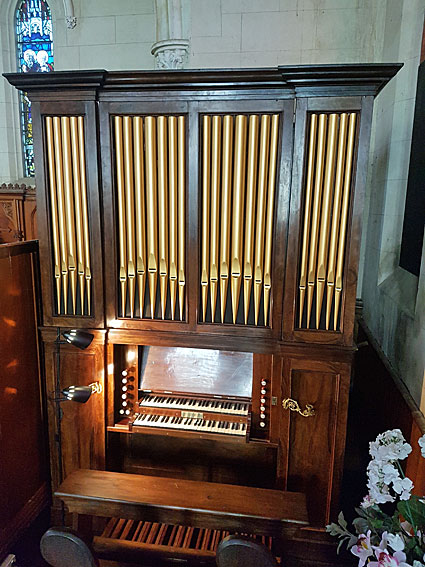
St Paul's Church, Clunes – organ after restoration 2018
(photograph by Daniel Bittner [2018])
The organ was built by Hamlin & Son, 8 Brook Street, Euston Road, London, around 1860. Robert Hamlin was a former employee of Hill & Son and this instrument bears characteristics of their work, particularly the two tapered ranks in the Swell Organ and style of drawstop engraving. The only instrument by the Hamlins known to survive in Great Britain is at Holy Trinity, Torbryan, Devon.2 The firm sent out two organs to Victoria, one a two- manual instrument initially placed in the Baptist Church, Collins Street, Melbourne, opened in 1859, and the second, now at Clunes, for a private residence. When it was installed at the Wesleyan (Methodist) Church, Daylesford in March 1881, it was stated that "it was manufactured at the express order and under the personal supervision of a Melbourne gentleman who intended it for his son, but the young man died before it arrived and the instrument has remained unused. The timber in the organ has had 15 years seasoning."3
In 1888 the organ was sold to St Paul's, Clunes and erected by William Anderson at a cost of £200.00, this including the addition of a small-scale Pedal Bourdon at the rear of the instrument.4 The instrument was dedicated on 30 August 1888.5
Apart from the addition of an electrical blower outside the church (a source of considerable anxiety in summer when it delivered hot, dry air to the instrument) and inappropriate electrical fittings on the console, the instrument remains in a remarkable state of originality, retaining all of its original action and pipework. The organ is of interest for its overall intactness, classical style casework in veneered walnut, with gold-leafed dummy facade pipes, highly attractive bright sound in a fine acoustic, and its attractive console fittings. The organ has many characteristics of the work of the Hill firm: similar stop engraving, the use of tapered ranks on the Swell – even cast iron bellows weights with the initial "H". The Swell is only to Tenor C, the Great manual is retractable to enable the console doors to close, and its overall dimensions are modest.
Australian Pipe Organs Pty Ltd, directed by Daniel Bittner, has carried out an extensive restoration in 2018, assisted by a major grant from the Vera Moore Foundation. The work has consisted of the following:
• Releathering of the double-rise reservoir and feeders
• Installation of a new silent blower in a silencing cabinet behind the organ
• Moving the organ forward around one metre to allow space for the blower
• Repair and refinishing of the casework, constructed unusually in veneered walnut – many of the case panels have been reassembled from dissected fragments and the whole cleaned and wax polished
• The wooden dummy façade pipes have been refinished in high quality gold paint
• Complete restoration of the two slider chests which had suffered badly from runnings, especially in summer – these have been flooded with glue and surfaces planed and refitted, and pallets have been recovered in new leather
• The mechanical key and stop actions have been fully overhauled
• The wooden pipes have been checked for any leakage and repaired
• The metal pipes have been fitted with tuning slides owing to their deteriorated condition and manufacture from a high lead percentage metal which is very soft
• The console has been fully refurbished, damage rectified, electrical fittings removed, manual keys cleaned, the pedal board recapped in new timber and the original stop labels reaffixed (some were found beneath the organ)6
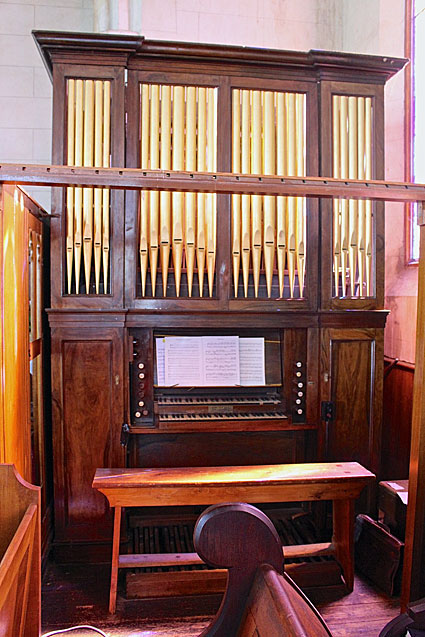
St Paul's Anglican Church, Clunes – organ before restoration
(Photograph by Trevor Bunning [September 2017])
| GREAT Open Diapason Stop Diapason Bass Clarabella Dulciana 8 Principal Flute Fifteenth Swell to Great SWELL Stop Diapason Viol di Gamba Gemshorn PEDAL Bourdon Great to Pedal |
8 8 8 8 4 4 2 8 8 4 16 |
1-12 zinc, placed at floor level CC-BB TC TC TC (TC, bottom octave of keys fixed) tapered with bells tapered |
Compass: 56/30
Mechanical key and stop action
Lever swell pedal
2 composition pedals
Hand and electrical blowing
Great manual is retractable to allow console doors to close 7
1 Victorian Churches: their origins, their story & their architecture, edited by Miles Lewis. East Melbourne; National Trust of Australia (Victoria), 1991, p.150
2 National Pipe Organ Register (UK) N12516
3 Daylesford Advocate, 1 February 1881, 24 March 1881, cited in E.N. Matthews, Colonial Organs and Organbuilders. Carlton: Melbourne University Press, 1969, p.166
4 Clunes Guardian and Gazette, 31 August 1888, cited in E.N. Matthews, Colonial Organs and Organbuilders. Carlton: Melbourne University Press, 1969, p.165
5 Church of England Messenger, 11 September 1888, p.9
6 Details supplied by Daniel Bittner, Australian Pipe Organs Pty Ltd, January 2019
7 Technical details noted by John Maidment February 1966 and on subsequent inspections
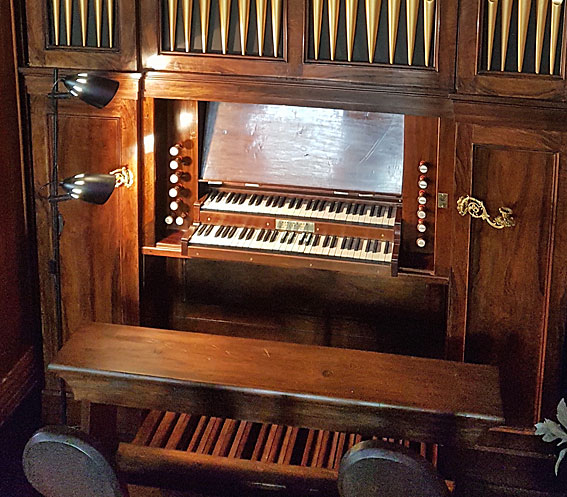
St Paul's Church, Clunes – console after restoration 2018
(photograph by Daniel Bittner [2018])


St Paul's Anglican Church, Clunes - stop jambs
Photograph by Trevor Bunning [September 2017])

St Paul's Church, Clunes: Hamlin nameplate before restoration
Photograph by Trevor Bunning [September 2017])
 |
||
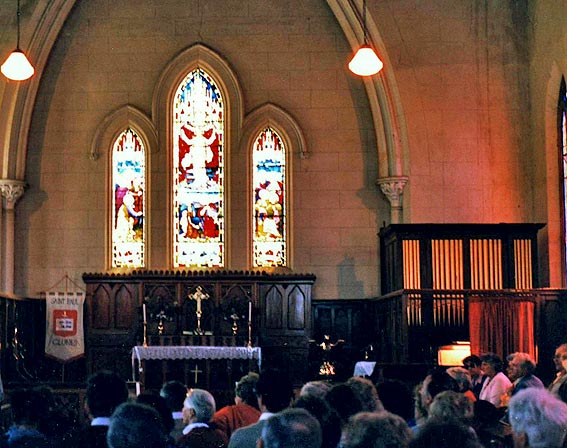 |
||
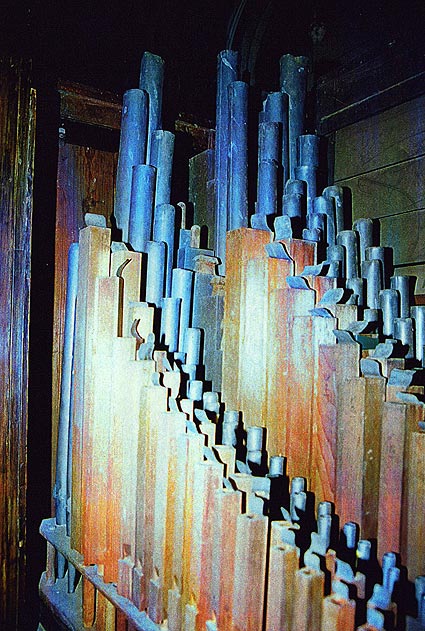 |
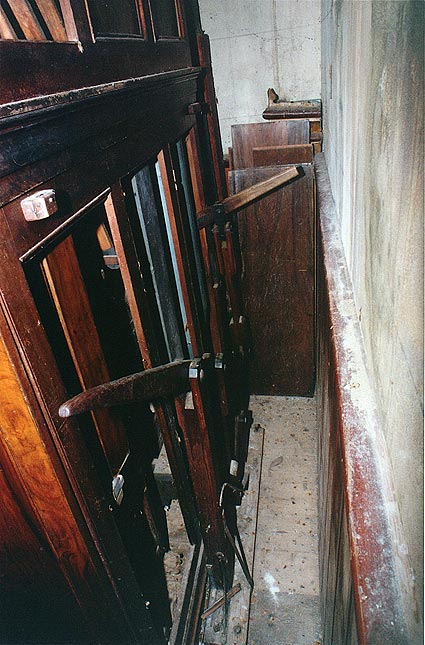 |
|
Photos JRM and Simon Colvin
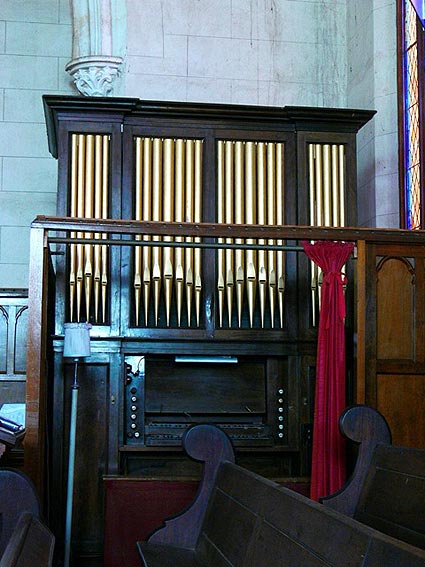
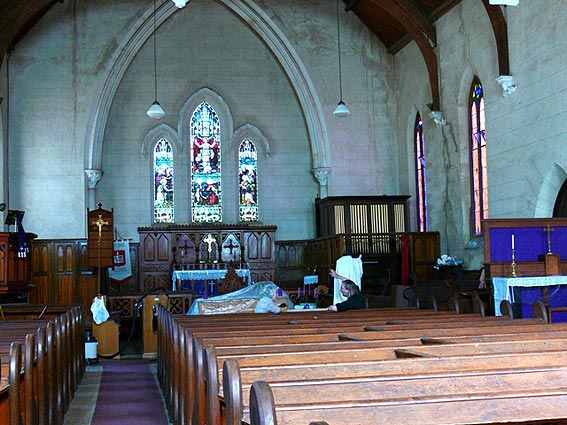
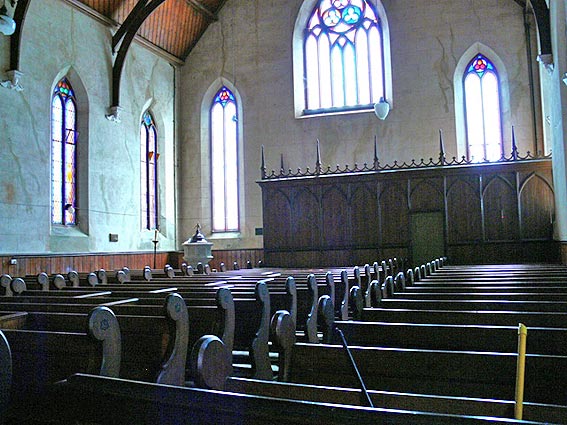
JRM (Dec. 2007)
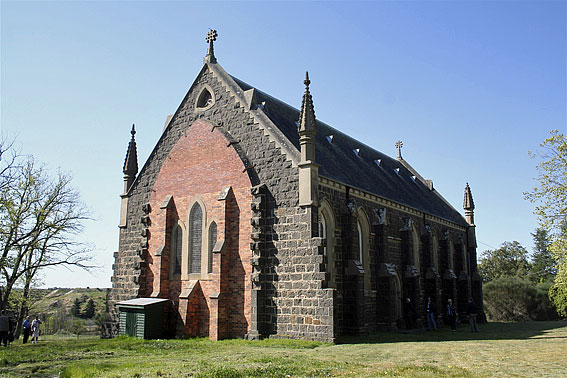
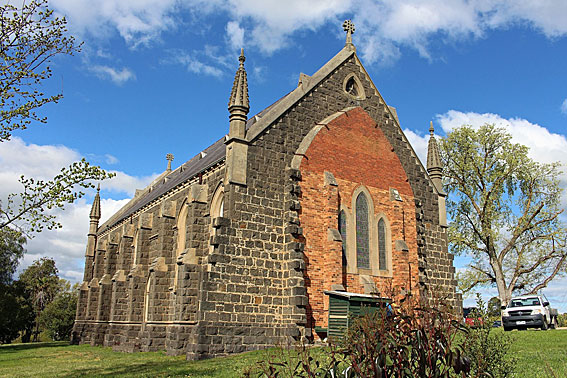
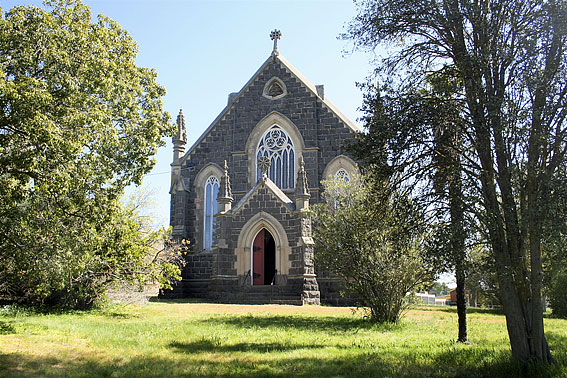
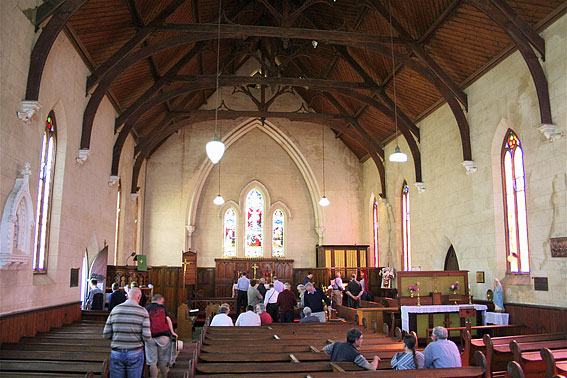
Photos: Trevor Bunning (Oct. 2008)